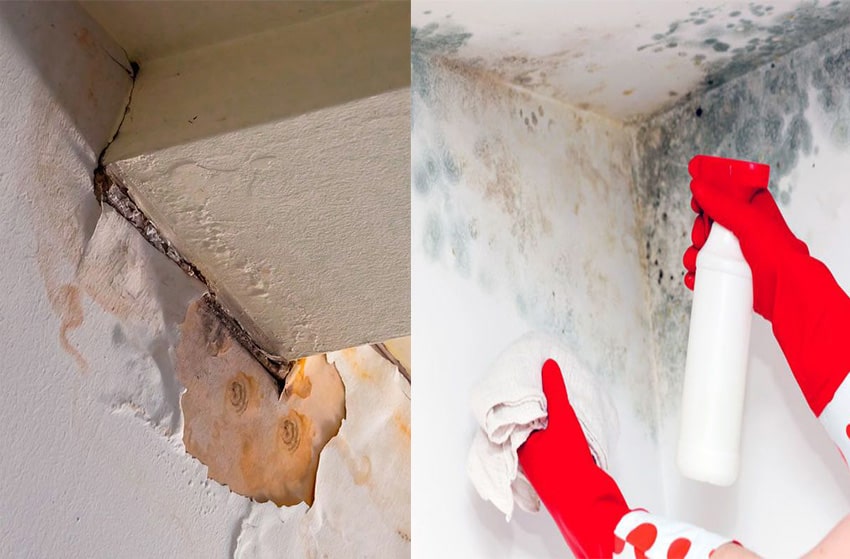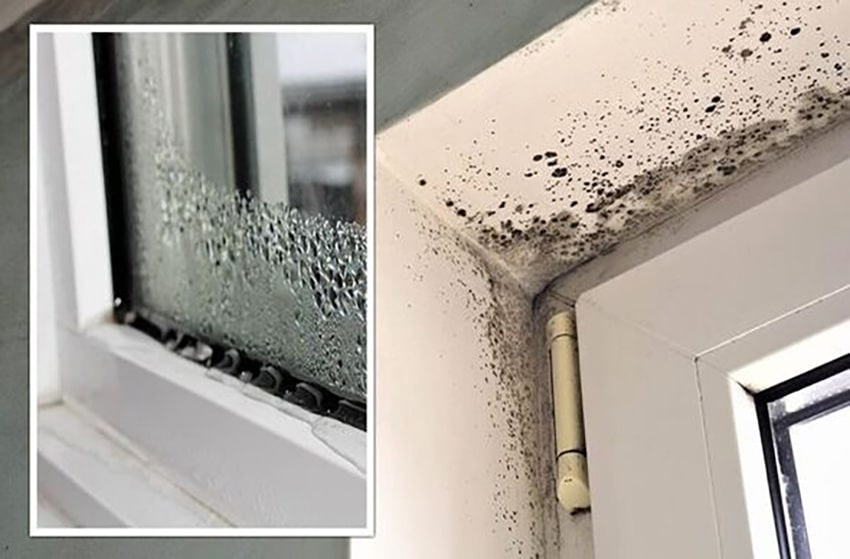
When we talk about home ventilation, it refers to the exchange of indoor air with outdoor air to improve indoor air quality and maintain a healthy living environment. Ventilation in a house is a crucial aspect of building design and construction and helps in myriad ways to keep the home environment healthy. Modern homes may use different systems and technologies to achieve proper ventilation, including natural ventilation, mechanical ventilation, and heat recovery ventilation.
In this article, we’ll explore the significance of ventilation systems and other related aspects that homeowners should know about for better judgement. Let’s begin!
Importance of Ventilation
A properly ventilated house is not only good for its residents but also for the longevity of the structure. Proper ventilation has many advantages, and here are a few to take note of:
a.) Improved Air-Quality Indoors

One of the most important benefits of proper ventilation is improved air quality indoors.
- The air inside a home can contain a variety of pollutants, including volatile organic compounds (VOCs) from cleaning products, paint, and furniture, radon gas from the soil, and mould fragments from damp areas.
- These pollutants are chiefly responsible for poor indoor air quality and add to the risk of respiratory problems, allergies, and other health issues.
- Proper ventilation helps to dilute and remove these pollutants by exchanging indoor air with fresh outdoor air, creating a healthier living environment.
b.) Controlled Moisture-levels

Moisture control is a great benefit of proper ventilation.
- Excessive moisture in the home can cause problems such as mould growth, rot, and structural damage.
- Mould can cause respiratory problems, allergies, and other health issues and can be difficult and expensive to remove once it has taken hold.
- Proper ventilation helps prevent excessive moisture buildup and regulates indoor humidity levels, preventing moisture accumulation and damage to building materials.
- In addition to reducing indoor humidity levels, ventilation can also help to remove moisture generated by everyday activities, such as cooking, showering, and laundry.
- By removing moisture from the home, ventilation can help to prevent mold growth, condensation, and other moisture-related problems.
c.) Improved Energy- Efficiency

Proper ventilation also provides a significant energy efficiency advantage.
- Heating and cooling systems take a lot of energy, and well-ventilated spaces enjoy reduced need for these systems, lower energy bills, and a reduced carbon footprint.
- In addition to reducing the need for heating and cooling, proper ventilation can also help improve the overall performance of these systems.
- By removing indoor air pollutants, ventilation can help to reduce the risk of mechanical failures and improve the efficiency of heating and cooling systems, leading to lower energy bills and a more sustainable home environment.
d.) Good for Health
Proper ventilation also offers the advantage of promoting a healthier living environment.
- Poor indoor air quality can cause a number of health problems, including respiratory issues, headaches, allergies, and other health issues. It may be due to built-up indoor air pollutants, such as volatile organic compounds (VOCs), radon, and mould fragments, that can accumulate in the home over time.
- Proper ventilation can help to regulate the pressure inside the home, preventing back-drafting from occurring. By ensuring that the pressure inside the home is equal to or greater than the pressure outside, proper ventilation can help to keep outdoor air from being drawn into the home and reduce the risk of dangerous combustion gases entering the living space.
- Proper ventilation can also help to regulate indoor humidity levels, preventing the growth of mold and other allergens and reducing the risk of respiratory problems, headaches, and other health issues.
Read More: Factors That Influence Interior Design
e.) Improved Comfort Level
Proper ventilation plays a vital role in enhancing indoor comfort by effectively removing unpleasant odors and promoting a fresh and clean-living space.
- Poor indoor air quality results in various lingering smell, such as cooking odours, pet odours, and tobacco smoke, making the home environment unpleasant and uncomfortable.
- Ventilation helps regulate these indoor odours and dilutes and removes indoor air pollutants, providing a fresh and clean air supply.
- Ventilation also helps regulate indoor temperatures and humidity levels. It helps create a more comfortable environment by reducing stuffiness, excessive humidity, and temperature extremes.
- With proper ventilation, there’s less need for air fresheners and other air purifiers, as the continuous flow of fresh air can help to keep the home smelling clean and fresh.
Read More: Tips for Choosing the Right Furniture for a Home
Signs of Bad Ventilation
Here are a few signs of poor ventilation inside your house-
a.) Increased Humidity Levels
High indoor humidity indicates that the ventilation inside your house is inadequate. When there is not enough air exchange between the indoors and outdoors, the indoor air can become stagnant and humid, causing several problems, so it is essential to maintain good ventilation to prevent such issues from arising.

b.) Bad/Musty Odors
A musty or damp smell can be due to poor ventilation when the moisture is not removed from the indoor environment rightly. It can lead to mould growth and other moisture-related problems. When the ventilation is improper, odours from various sources linger in the surroundings, making for uncomfortable living conditions.

c.) Respiratory Issues

If you constantly experience respiratory problems, such as headaches, dizziness, or asthma, it can be due to poor indoor air quality caused by poor ventilation. Proper ventilation helps to dilute and remove pollutants from the indoor environment, reducing the risk of respiratory problems.
d.) Excess Condensation
Excessive condensation on windows and other surfaces can indicate poor ventilation. It happens when the indoor air is not exchanged with the air outside, leading to mould growth and other moisture-related problems.

e.) Increased Dust and Allergens

Poor ventilation can result in a noticeable increase in dust and allergens inside the home, leading to increased allergies and other health problems.
Ventilation and Indoor Temperature: A Vital Connection
Ventilation is an essential aspect of maintaining a comfortable and healthy indoor environment. One of the crucial functions of ventilation is to regulate indoor temperature, keeping it within a comfortable range for occupants. A well-ventilated home not only helps to reduce energy bills by reducing the need for heating and cooling systems, but it also helps to create a more pleasant and healthy living environment.
- Proper ventilation helps to regulate indoor temperature by exchanging indoor air with outdoor air. This exchange helps regulate indoor temperature.
- During the summer months, ventilation helps to remove hot and humid air, lowering indoor temperatures. In the winter, it brings in fresh, dry air, reducing the risk of indoor humidity and mold growth.
- By controlling indoor temperature, ventilation also helps to reduce the need for heating and cooling systems, which can be energy-intensive and contribute to high energy bills.
The Importance of Ventilation for your Health and Home
Ventilation is an essential aspect of indoor air quality, playing a crucial role in maintaining the health of individuals as well as the overall structural integrity of the home. Here is how proper ventilation can influence the health and well-being of both people and buildings:
Ventilation’s Role:
Improves indoor air quality by diluting and removing pollutants, such as volatile organic compounds (VOCs), radon, and mould spores.
It prevents excessive moisture buildup in the home, reducing the risk of mold growth and damage to building materials.
Regulates indoor temperatures, reducing the need for heating and cooling systems and leading to lower energy bills.
It reduces the risk of respiratory problems, headaches, and other health issues caused by poor indoor air quality.
It provides a fresh air supply and reduces indoor odours, making the home a more comfortable living environment.
Controls the pressure inside the home, reducing the risk of back-drafting and the concentration of combustion gases such as carbon monoxide.
Issues with Poor Ventilation:
- High indoor humidity can lead to mold growth, musty odours, and other moisture-related problems.
- Poor indoor air quality results in respiratory problems, headaches, and other health issues.
- Excessive moisture buildup can result in mould growth and damage to building materials.
- Uncomfortable living conditions, including stale air, indoor odours, and temperature imbalances.
Ways for Proper Ventilation:
- You can use exhaust fans in bathrooms, kitchens, and other moisture-generating areas and exchange indoor air.
- You can use vents, open windows, and other means to bring fresh outdoor air into the home.
- You can also consider installing a whole-house ventilation system to ensure proper air exchange throughout the home.
- By keeping air ducts and filters clean, you can ensure indoor air is not getting recirculated in the house.
- Try to have regular inspections to ensure that ventilation systems are working appropriately and the indoor air- quality is maintained.
Final Words
Here we discussed various aspects of home ventilation, including its importance and benefits, the signs of poor ventilation, and the relationship between ventilation and indoor temperature. Ventilation is a crucial aspect of a healthy indoor environment. Making sure it’s well maintained can significantly benefit your home and overall health.
FAQ’s
Q- What are the four types of ventilation?
A- Ventilation can primarily be divided into four categories; natural ventilation, mechanical ventilation, hybrid ventilation, and spot ventilation, with the last one focusing on particular areas.
Q- What type of ventilation is used in homes?
A- The most commonly used type of ventilation in homes is natural ventilation, and mechanical ventilation, which uses fans and ducts to bring fresh air. Other less common types of ventilation used in homes include balanced and exhaust-only ventilation.
Q- How are modern houses ventilated?
A- Modern homes may use mechanical ventilation systems, such as whole-house fans, heat recovery ventilators (HRVs), and energy recovery ventilators (ERVs), to bring fresh air and remove stale air. These are energy-efficient systems controlled using timers, sensors, or remotely via smartphone apps. Some modern homes may also use a combination of natural and mechanical ventilation, using windows and fans to provide optimal indoor air quality.
Q- What is the most effective ventilation system for a home?
A- Balanced ventilation systems are usually the best course for most homes. Still, for the most part, it depends on the individual house. You can consult with a professional or an HVAC specialist to determine the best ventilation system for your home based on factors such as climate, building design, and personal preference.




